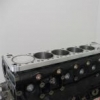Increasing CR. Pin Height or Deck.
Announcements
-
Similar Content
-
Latest Posts
-
See my post here If you put the Haltech in, you won't have to worry about any of that. And, in case you're worrying about my lack of credentials in doing your exact swap, I put a Neo in an R32. There has never been a stock boost solenoid near my car and the Neo's ECU has never cared. Nor should it, because it is electronically impossible for it to care.
-
That's 100% wrong. Did you wire in the boost sensor? If you did not, then that is 101% your answer. Neo ECUs do suck a bit.
-
Hello, I'm trying to make this thread basically the thread with all the answers to common questions regarding specifically the RB20 DE NEO + T engine, that comes in the R34. Answers will and only should be provided by those who have done this conversion or actually have some relevant real life experience please. Please feel free to ask questions in the comments if you have any so other members can answer. I feel like this thread is really needed, especially with more Americans buying (unknowingly going to regret it too) rb20 neo r34s. My first question being - What do you guys use for tuning? I have purchased a haltech elite 2500 Plug and play kit for the rb25det NEO because the ecu plug is the same, but I am unsure if any of the pins would need to be repined to match. Second question that I see asked very often - After this conversion, did you install the boost solenoid/ actuator? I see many people doing a + T setup on their rb20 NEOs while running stock RB25DET NEO ECUs with no tune. I am wondering how they are going about doing that and consistently abusing the car because many of these people have had these untuned setups running for a very long time. That was my original plan, but my engine cuts out at 5 psi of boost using the stock ecu with no tune and no boost solenoid/actuator.




Recommended Posts
Create an account or sign in to comment
You need to be a member in order to leave a comment
Create an account
Sign up for a new account in our community. It's easy!
Register a new accountSign in
Already have an account? Sign in here.
Sign In Now